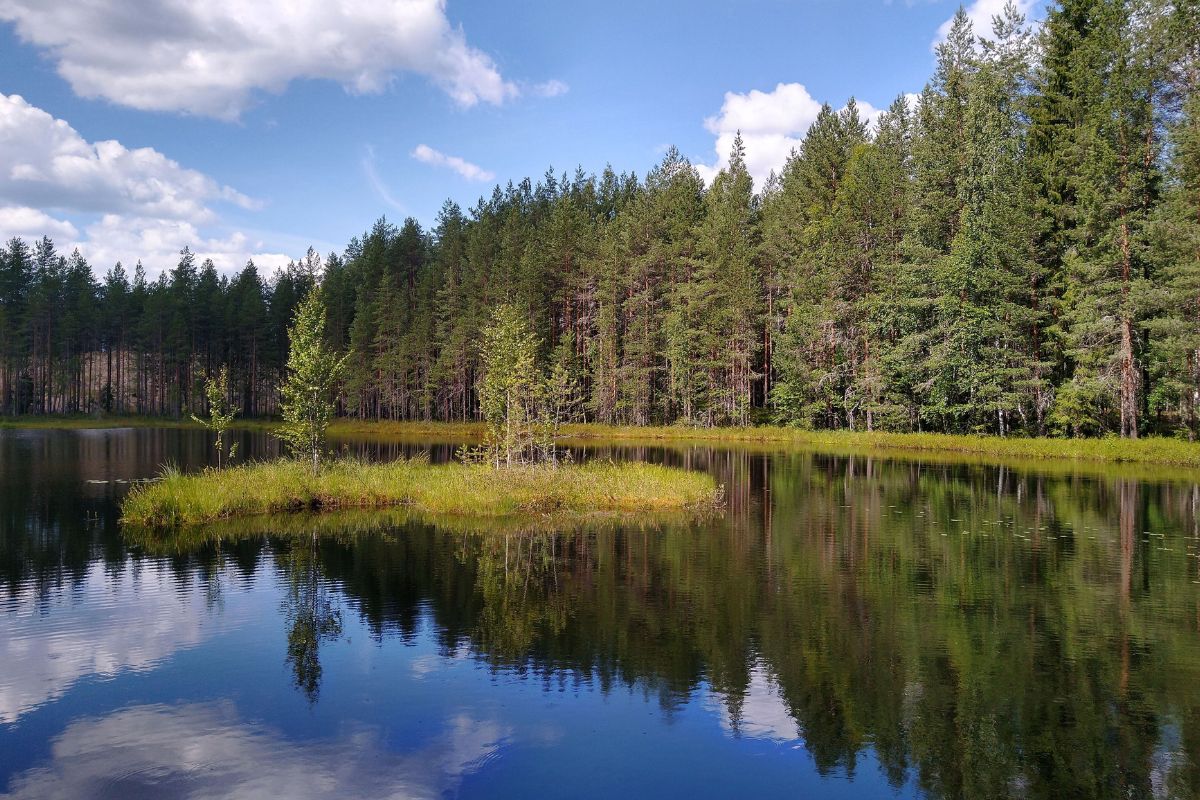Mystery Of Washington’s Floating Peat Islands

Have you ever heard of Washington's floating peat islands? These unique natural wonders drift across lakes, creating an ever-changing landscape. Found mainly in the Pacific Northwest, these islands are made of peat, a type of soil formed from decaying plant material. They can support trees, shrubs, and even small animals. Imagine seeing an island one day and finding it in a different spot the next! These floating islands not only offer a fascinating sight but also play a crucial role in the ecosystem. They provide habitats for wildlife and help filter water. Curious to learn more about these mysterious floating islands? Let's dive in!
What Are Floating Peat Islands?
Floating peat islands are unique natural formations found in various parts of the world, including Washington. These islands are made of layers of decayed plant material, known as peat, which float on the surface of water bodies. They can support vegetation and even small trees, creating a fascinating ecosystem.
Where to Find Floating Peat Islands in Washington
Washington state is home to several locations where you can witness these intriguing floating peat islands. Here are some of the best spots to explore:
Nisqually National Wildlife Refuge
Located near Olympia, this refuge offers a chance to see floating peat islands amidst a diverse array of wildlife. The refuge's boardwalk trails provide excellent views of these natural wonders.Sundew Bog
Situated in the Olympic National Park, Sundew Bog is a hidden gem. The bog features floating peat islands surrounded by a lush, green landscape. It's a great spot for nature enthusiasts and photographers.Mount Rainier National Park
This iconic park is not just about mountains and glaciers. In the park's lower elevations, you can find floating peat islands in some of the wetland areas. These islands add to the park's diverse ecosystem.Turnbull National Wildlife Refuge
Located near Spokane, Turnbull National Wildlife Refuge is another excellent place to observe floating peat islands. The refuge's wetlands are home to these unique formations, along with a variety of bird species.
Why Are Floating Peat Islands Important?
Floating peat islands play a crucial role in their ecosystems. They provide habitat for various plant and animal species, help in water purification, and act as carbon sinks, storing large amounts of carbon that would otherwise contribute to climate change.
How to Visit Floating Peat Islands Safely
When visiting these natural wonders, it's essential to follow some guidelines to ensure both your safety and the preservation of the environment:
Stay on Designated Trails
Many of these locations have boardwalks or marked trails. Stick to these paths to avoid damaging the delicate peat islands.Respect Wildlife
Keep a safe distance from animals and do not disturb their natural habitat. Use binoculars or a camera with a zoom lens for a closer look.Pack Out What You Pack In
Leave no trace by taking all your trash with you. This helps keep the environment clean and safe for wildlife.
Best Time to Visit Floating Peat Islands
The best time to visit floating peat islands in Washington depends on the location and your interests:
Spring and Summer
These seasons offer the best weather for hiking and exploring. The vegetation on the peat islands is lush and vibrant, making for beautiful scenery.Fall
Autumn brings stunning foliage and fewer crowds. It's a great time for photography and enjoying the peacefulness of nature.Winter
Some locations may be accessible in winter, but be prepared for cold and wet conditions. Check with park authorities for trail conditions and accessibility.
What to Bring When Visiting Floating Peat Islands
To make the most of your visit, consider bringing the following items:
Sturdy Footwear
Trails can be muddy or slippery, so wear waterproof hiking boots with good traction.Binoculars and Camera
Capture the beauty of the floating peat islands and observe wildlife from a distance.Water and Snacks
Stay hydrated and energized during your exploration. Bring reusable water bottles and eco-friendly snacks.Weather-Appropriate Clothing
Dress in layers and bring rain gear, as weather conditions can change quickly.
Fascinating Facts About Floating Peat Islands
Floating peat islands are not just visually stunning; they also have some interesting characteristics:
Dynamic Nature
These islands can move and change shape over time, influenced by water currents and wind.Unique Flora and Fauna
The islands support specialized plant species, such as carnivorous plants, and provide habitat for various insects and birds.Historical Significance
Some floating peat islands have been around for centuries, offering a glimpse into the region's natural history.
The Enigma of Floating Peat Islands
Washington's floating peat islands are a fascinating natural phenomenon. These islands, made of peat moss and other organic materials, float on lakes, creating unique ecosystems. They move with the wind and water currents, making them unpredictable and mysterious. Scientists study these islands to understand their formation and impact on local wildlife.
Visiting these islands offers a chance to see rare plants and animals. It's a reminder of nature's power and beauty. Whether you're a nature lover or just curious, exploring these islands is an unforgettable experience.
Next time you're in Washington, take the opportunity to see these floating wonders. They are a testament to the state's diverse and rich natural heritage. Don't miss out on this unique adventure.

